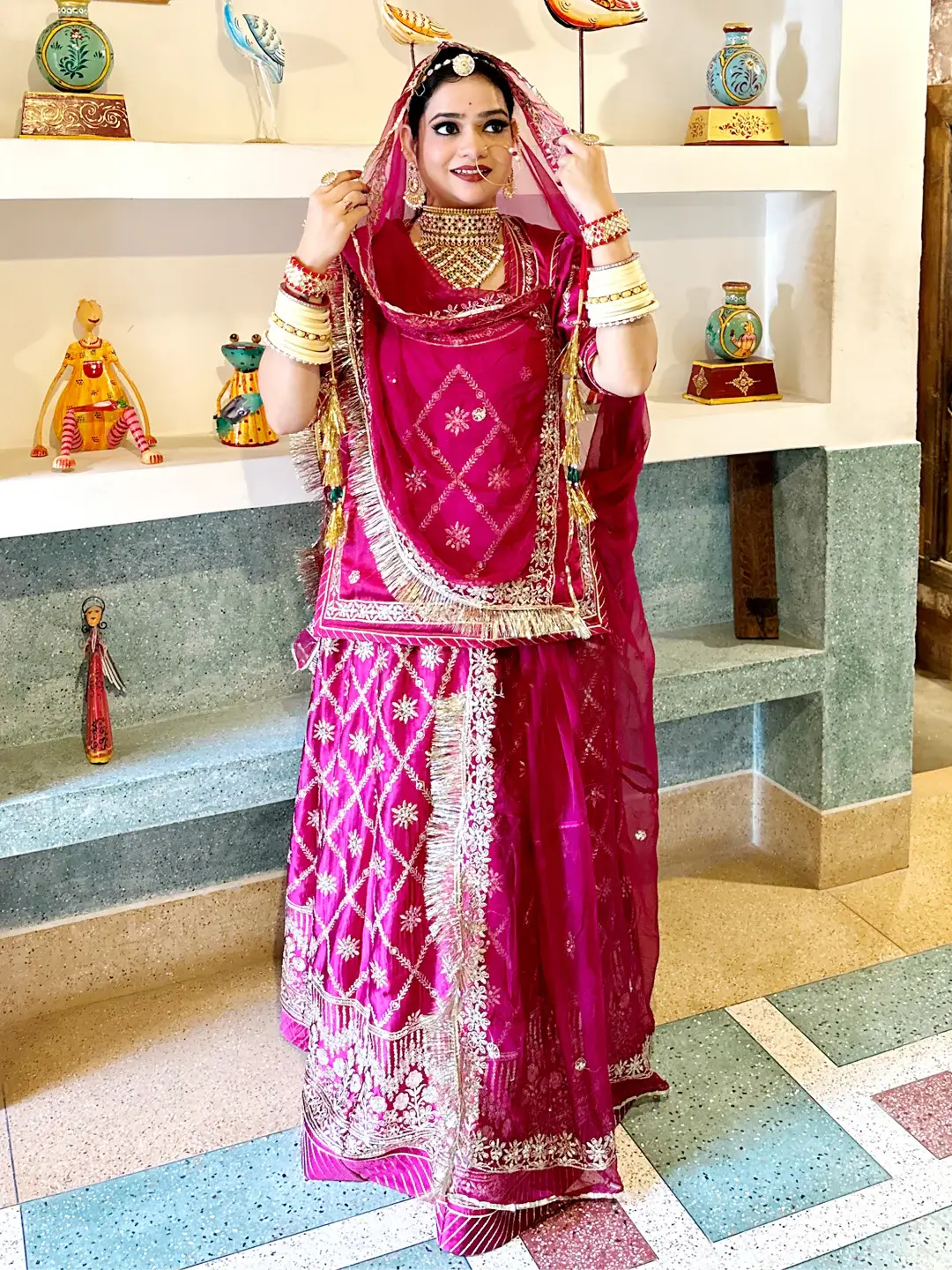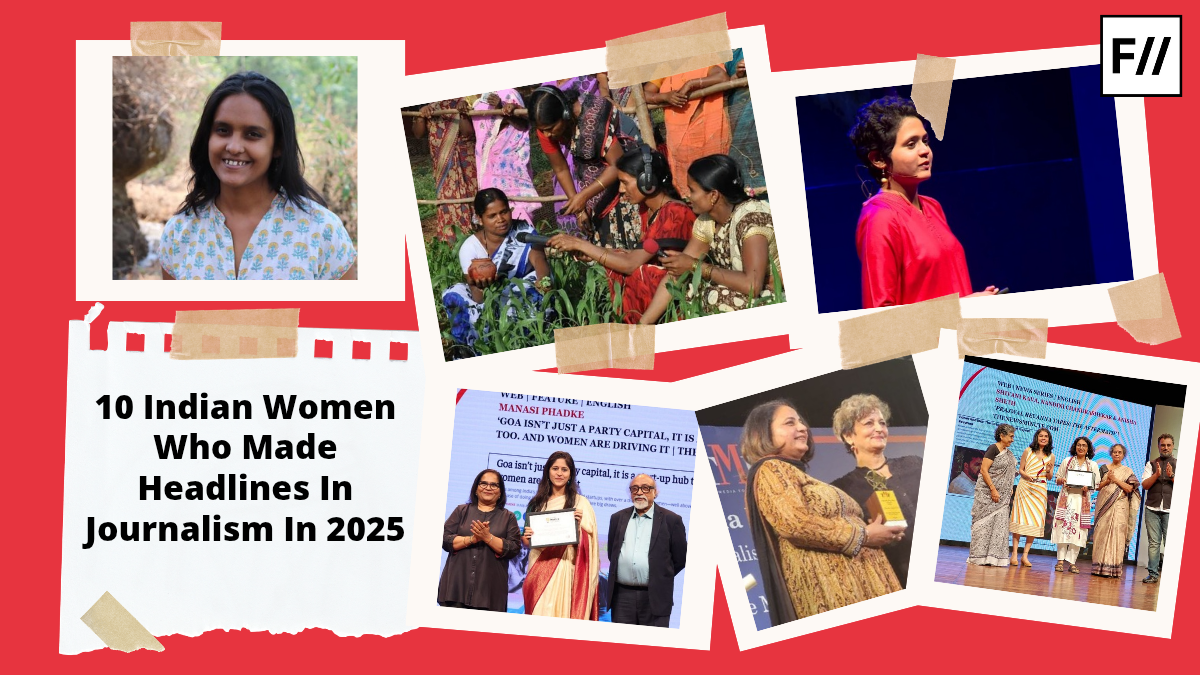It starts with a glossier Pinterest board and a sparkle in the eye. A recently engaged woman searches for “bridal entry ideas” on Instagram. What follows is a digital rabbit hole—of candid photography reels, lehenga twirls in slow motion, drone shots of varmala ceremonies, and behind-the-scenes bridal glam tutorials. These days, weddings are extensive content productions that are painstakingly planned, edited, and posted for public viewing rather than merely being private unions of two people or families. We have to wonder if Indian brides are now performing more for the internet than for themselves somewhere in this spectacle.
From sacred to cinematic
Indian weddings have been a highly social event for centuries; they are elaborate, emotionally charged, and filled with customs that combine celebration and spirituality. However, the distinction between celebration and show business has become more hazy in recent years. The bride is now not only the main character but also the product, with social media sites like Instagram, YouTube, and even LinkedIn serving as hosts for wedding announcements and diaries. Her happiness, nervousness, and sense of style are all bundled into a fashionable carousel.

One of the most significant contributors to this wedding-content explosion, bridal fashion designer Sabyasachi, has evolved from a couture designer to a cultural phenomenon. Many young Indian women feel pressured to live up to the aspirational standard set by his bridal posts, which are dripping with heritage jewels and nostalgic sepia tones. These days, brides frequently approach their wedding with a comprehensive content strategy, complete with moodboards, photographers who also serve as reel editors, and “content teams” that are employed to record every move of the eyebrows. Brides frequently go viral before the wedding even starts.
The rise of the ‘Reel Bride’
‘Reel Bride’ is both a light-hearted moniker and a scathing critique. Digitally literate, financially independent, and keen to record every detail, it represents a new archetype of Indian womanhood. The Haldi reel, the first-look video, the drone-captured varmala moment—each is no longer just for family albums but for likes, shares, and validation. However, performance fatigue frequently lurks behind the glamour of planned bridesmaid dances and “surprise” bridal entries. Most Indian weddings do not align with the reel-friendly format. At such weddings, we see people being pushed to engage in unnatural actions for the camera.
Many brides feel pressure from their online following rather than from their parents or partners. Even though the reality is a maelstrom of stress, fatigue, and financial struggles, friends and followers expect visually appealing updates from the very beginning of their engagement. Families frequently contribute very little, and several attempts are made to get the ideal social media photo.
Photographers like Vinita Khera and Pepper Photography, who have been documenting high-profile weddings for more than ten years, claim that ‘In the past, brides used to be anxious about their pheras. Now, if their lehenga twirls don’t look good in the preview, they get anxious.’ With coordinated hashtags, live edits, and vendor shoutouts, weddings have evolved into three-day content sprints. Photographers are now expected to take vertical shots in the common 16:9 format. A lot of people just want to share those photos on social media. Wedding albums and videos are a thing of the past.
New pressures to be seen
Nowadays, everyone has an impact. Many brides feel pressure from their online following rather than from their parents or partners. Even though the reality is a maelstrom of stress, fatigue, and financial struggles, friends and followers expect visually appealing updates from the very beginning of their engagement. Families frequently contribute very little, and several attempts are made to get the ideal social media photo.

Riya, a Mumbai-based marketing professional who got married in February, says that ‘I had a breakdown at my own mehendi because I hadn’t posted a reel yet. Although it seems absurd now, I felt like I was lagging behind other brides who were posting updates in real time. As if my wedding wasn’t significant enough. This change in perspective is arguably the most worrisome. When did a personal, sacred milestone like marriage turn into a deadline for contentment?
Nearly 72% of Indian brides now hire wedding photographers who are also skilled in creating social media content, according to a recent ShaadiSaga survey. More than half of them claim to organise their events around “reel-worthy” moments, such as lehenga transitions timed to popular music or doli entries with fog machines.
The stakes have shifted, even though it is undeniable that modern brides are exercising agency over how they wish to commemorate and portray their weddings. These days, impressions, reach, and virality are more important than merely family customs or individual aspirations.
The industry that’s feeding it
In response to this trend, a flourishing content-based wedding industry has emerged. Previously documenting their own weddings, bridal influencers now provide “wedding content consultation” packages. Some even assist with the scripting of proposal videos.

The concept of the wedding has spread well beyond the actual event, from devoted “bridal content creators” to lehenga unboxing videos. These days, the wedding is a month-long digital story that includes pre-wedding photos, skincare regimens for the bride, jewellery purchases, dance practice, vendor shout-outs, and, finally, the wedding film’s grand premiere. Photographers now include Instagram Reels in their packages in the $130 billion wedding industry.
The intimacy trade-off
An uncomfortable trade-off between intimacy and aesthetics is at the heart of this change. When creating the ideal wedding content, what is sacrificed? It’s often about spontaneity. For example, tender embraces with mums, silent times of introspection, or jokes with siblings—the emotional messiness that makes weddings authentic. Seldom do these make it onto the final reel. What does it do? A well-polished love story, posed photos, and altered facial expressions.
The concept of the wedding has spread well beyond the actual event, from devoted “bridal content creators” to lehenga unboxing videos. These days, the wedding is a month-long digital story that includes pre-wedding photos, skincare regimens for the bride, jewellery purchases, dance practice, vendor shout-outs, and, finally, the wedding film’s grand premiere.
In a feedback loop made possible by social media, rituals are now carried out not only for religious or familial reasons but also for online praise. The personal gaze is frequently overshadowed by the performative one. What used to exist in memory is now captured on film.
Feminism & the digital bride
A feminist perspective should also be taken into account. On the one hand, narratives are being reclaimed by contemporary brides. They are speaking vows, dancing, drinking, wearing white, and eschewing mangalsutras—things that were frowned upon just a generation ago. Additionally, their digital storytelling serves as a vehicle for self-expression and rebellion. On the other hand, rather than going away, the pressure to be “the perfect bride” has only changed. She still needs to be elegant, radiant, and glamorous, but she also needs to be interesting and “aesthetic”. The cage has been replaced by a new one. The digital bride is similar to the contemporary Cinderella in that she works extra hard to showcase her fairy tale in high definition rather than waiting to be saved.
So, what’s the solution?
Shaming women for celebrating their weddings online or avoiding technology is not the solution. For many brides, social media provides a digital legacy, creative expression, and connection, making it a potent tool. However, awareness is essential. The questions can be asked – is this moment meaningful to me, or just reel-worthy? Am I performing my joy or am I recording it? Will I recall this as a romantic moment or as a stunning photograph? The most memorable weddings aren’t the most viral ones; they are the ones where the bride laughed as if no one was looking, even though everyone was.
Thus, fundamentally, weddings are about tradition, love, and community. They are also intensely personal, emotional, and chaotic. It is easy for Indian brides to feel that they must filter their emotions, curate their joy, and pose through one of the most life-changing experiences in this era of content overload. The tears before the ceremony, the silly dance with a sibling, or the look with a partner are some of the most beautiful bridal moments that aren’t photographed. Perhaps the true story lies in those brief, spontaneous moments. The memory of love, not just its highlight reel, should be what’s left when the lights go down and the reels stop spinning.




